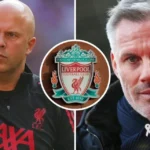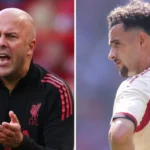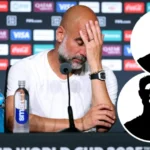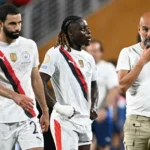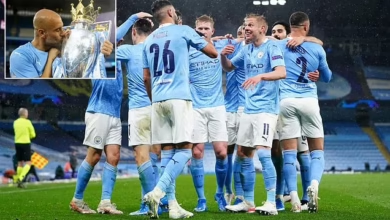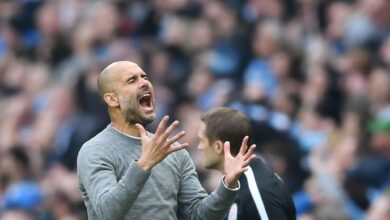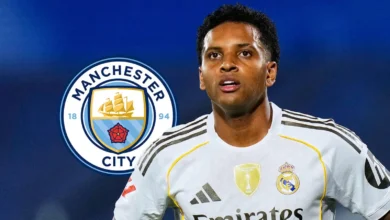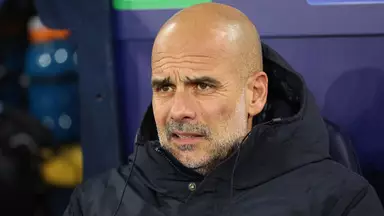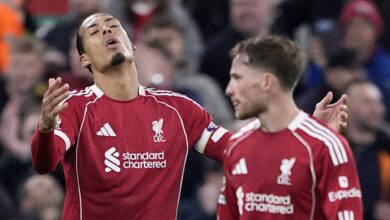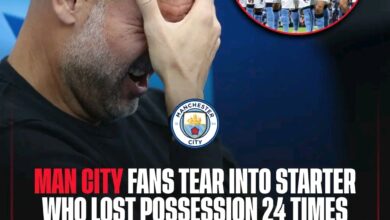Liverpool’s Transfer Priorities: A Comprehensive Analysis Following Community Shield Setback
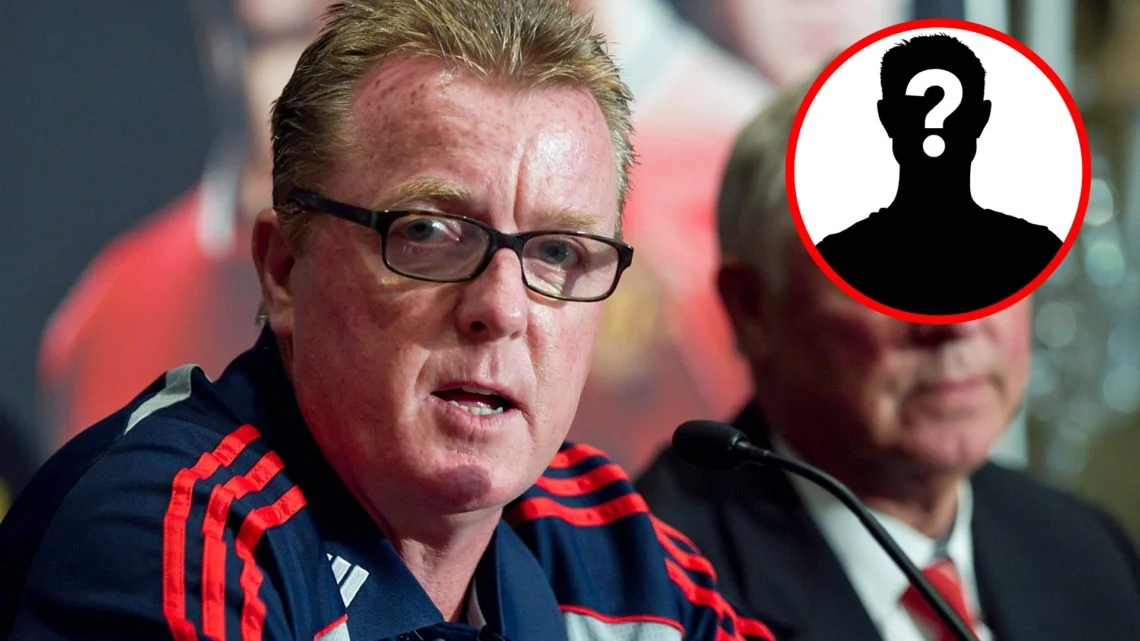
The summer transfer window is reaching its climax, and Liverpool find themselves at a crossroads that will define their upcoming campaign. Despite having already invested close to £300 million in new signings, the Reds’ unexpected Community Shield defeat to Crystal Palace has exposed critical vulnerabilities that demand immediate attention. Former Liverpool defender Steve Nicol has been particularly vocal about the club’s remaining needs, identifying two key positions that require reinforcement before the transfer window closes.
Liverpool’s loss to Crystal Palace in the Community Shield served as more than just a disappointing curtain-raiser to the new season. It provided a stark reminder that even the most promising squad on paper can fall short when key areas lack adequate depth and quality. While some supporters might find solace in the historical precedent that 12 of the last 13 Community Shield winners have failed to claim the Premier League title, suggesting the defeat could be a blessing in disguise, the performance itself revealed concerning gaps that cannot be ignored.
Manager Arne Slot, who has inherited a squad brimming with talent from his predecessor, witnessed firsthand the challenges that lie ahead. The match highlighted not only tactical adjustments needed for his new system but also the personnel shortcomings that could derail what many consider a title-defending campaign. The defeat has intensified discussions about Liverpool’s transfer strategy and whether their current approach is sufficient to maintain their competitive edge in multiple competitions.
The timing of this setback is particularly significant, coming at a point where most clubs have completed the majority of their transfer business. Liverpool’s ability to identify and secure the right players in the remaining weeks of the window could prove decisive in determining whether they can mount a serious challenge across all fronts or risk falling behind their rivals who have strengthened more comprehensively.
Steve Nicol, whose experience as both a Liverpool player and seasoned football analyst provides unique insight into the club’s needs, has been unequivocal in his assessment of the current squad’s deficiencies. Speaking on ESPN FC, Nicol outlined a clear hierarchy of priorities that he believes Liverpool must address to maximize their potential for the upcoming season.
“I think a centre-back, but apparently Liverpool can do both so why not do both?” Nicol stated when asked about the club’s transfer priorities. His response encapsulates the dual nature of Liverpool’s current predicament – while attacking reinforcements would certainly enhance their options, defensive stability must take precedence given the more pressing nature of their backline concerns.
Nicol’s analysis extends beyond mere personnel acquisition, emphasizing the importance of tactical cohesion and understanding between players. “They definitely need some back-up defensively. More importantly, they need to spend more time together and get acquainted, understand each other’s games, and understand where, and when and what,” he explained. This observation highlights a crucial aspect often overlooked in transfer discussions – the integration time required for new signings to reach their optimal effectiveness within the team’s tactical framework.
The former defender’s perspective carries particular weight given his intimate knowledge of Liverpool’s defensive requirements and the standards expected at Anfield. His emphasis on the need for multiple signings rather than a single marquee addition suggests a comprehensive approach to squad building that addresses both immediate needs and long-term sustainability.
Liverpool’s defensive situation presents a complex web of challenges that extend far beyond simple numerical deficiencies. At the heart of these concerns lies the aging profile of their defensive stalwart, Virgil van Dijk, who at 34 remains irreplaceable but inevitably approaches the latter stages of his career. The Dutch captain’s continued excellence masks the urgent need for succession planning and the gradual transition of responsibility to younger shoulders.
The injury histories of Joe Gomez and Ibrahima Konate add another layer of complexity to Liverpool’s defensive planning. Both players possess the quality to excel at the highest level, but their recurring fitness issues have consistently undermined the team’s defensive stability. Gomez, despite his versatility and experience, has struggled to maintain consistent fitness throughout multiple seasons, while Konate’s promising displays have been repeatedly interrupted by various physical setbacks.
Perhaps most concerning is the uncertainty surrounding Konate’s future at the club. With the French defender potentially departing on a free transfer next summer, Liverpool face the prospect of losing a significant defensive asset without receiving any compensation. This situation exemplifies the importance of proactive transfer planning and the risks associated with allowing valuable players to enter the final years of their contracts without resolution.
The current defensive setup lacks the depth and reliability required for a club competing on multiple fronts. Champions League campaigns, domestic cup competitions, and the relentless pace of Premier League football demand a defensive unit capable of maintaining high standards despite rotation and the inevitable injury setbacks. Liverpool’s current options, while talented individually, do not provide the collective security needed for sustained success.
While defensive reinforcement appears to be the more pressing concern, Liverpool’s interest in securing a new striker continues to generate significant discussion among supporters and analysts alike. The persistent rumors linking Alexander Isak with a move to Anfield reflect the club’s ambition to add another dimension to their attacking arsenal, despite already possessing formidable firepower in their forward line.
Isak’s profile as a proven Premier League performer makes him an attractive proposition for Liverpool. The Swedish international has demonstrated his ability to consistently find the net in English football, combining physical presence with technical ability and intelligent movement. His potential addition would provide Slot with tactical flexibility and the luxury of rotating his front line without compromising on quality.
However, the financial implications of pursuing Isak cannot be ignored. Newcastle United’s reluctance to sell their prized asset, combined with his substantial market value, means any potential deal would require a significant financial commitment. This reality forces Liverpool to weigh the immediate impact of such a signing against the alternative of addressing multiple positions with the same resources.
The striker debate also raises questions about the development and utilization of existing squad members. Liverpool’s current attacking options, while impressive, may benefit from the healthy competition that a new arrival would provide. The psychological impact of knowing that places in the starting eleven are genuinely contested often elevates the performance levels of entire squads.
Nicol’s pragmatic approach to this dilemma suggests that while Isak would represent a significant upgrade, the defensive needs are more fundamental to the team’s overall stability. “If you can get a player like Isak then I think you do it, but they definitely need some back-up defensively,” he noted, acknowledging both the appeal of the striker and the priority of defensive reinforcement.
Liverpool’s defensive recruitment strategy should ideally encompass both immediate impact and long-term planning. The acquisition of an experienced centre-back who can provide immediate stability while mentoring younger players represents a logical approach to addressing their current vulnerabilities.
Marc Guehi emerges as a particularly compelling option in this regard. The Crystal Palace captain has demonstrated remarkable consistency and leadership qualities that would translate seamlessly to Liverpool’s requirements. His Premier League experience eliminates the adaptation period often required for overseas signings, while his age profile ensures several years of peak performance.
Guehi’s situation at Palace presents an opportunity for Liverpool to capitalize on. The Eagles’ apparent willingness to sell, albeit at a substantial fee, creates a realistic pathway for negotiations. His leadership qualities, honed through captaining both club and country at various levels, would provide the defensive unit with an additional vocal presence and organizational influence.
The England international’s playing style also aligns well with modern defensive requirements. His ability to play out from the back, combined with his aerial prowess and defensive intelligence, makes him an ideal fit for Slot’s tactical preferences. The potential for Guehi to form partnerships with existing squad members while providing cover across the defensive line addresses multiple concerns simultaneously.
However, the financial aspect of any Guehi pursuit remains challenging. Palace’s reported asking price may require careful negotiation and potentially creative deal structures to make the transfer financially viable. The timing of such negotiations, coming late in the transfer window, adds urgency to any potential pursuit.
Beyond immediate first-team needs, Liverpool’s transfer strategy must also consider the long-term development of their defensive resources. The identification and acquisition of promising young defenders who can grow into future first-team regulars represents a crucial component of sustainable squad building.
Giovanni Leoni of Parma has emerged as a potential target who fits this profile perfectly. The young Italian defender represents the type of investment that Liverpool have historically excelled at making – identifying talent before it reaches premium valuations and developing it within their system. Leoni’s age and potential for growth align with Liverpool’s typical recruitment model and could provide excellent value for money.
The competition for Leoni’s signature from other major clubs indicates his substantial potential and the recognition of his abilities across European football. Liverpool’s interest signals their commitment to maintaining a pipeline of young talent while addressing immediate needs. The successful integration of such prospects requires patience and careful development, but the long-term benefits often justify the initial investment.
This dual approach to defensive recruitment – combining experienced additions with promising youth – reflects the sophisticated planning required in modern football. The ability to balance immediate competitive needs with future sustainability distinguishes successful clubs from those that experience cycles of boom and bust
Liverpool’s transfer activities must be viewed within the context of Financial Fair Play regulations and the club’s broader fiscal strategy. The substantial outlay already committed this summer places certain constraints on further spending, requiring careful prioritization and potentially creative deal structures to achieve their remaining objectives.
The timing of the transfer window’s conclusion adds urgency to any remaining business. Clubs often become more pragmatic in their valuation as deadlines approach, potentially creating opportunities for well-positioned buyers. Liverpool’s reputation and the appeal of joining a successful project may provide leverage in negotiations that pure financial offers might not achieve.
The interconnected nature of the transfer market means that Liverpool’s ability to complete their desired signings may depend on other clubs’ activities. The domino effect of major transfers often creates unexpected opportunities late in windows, requiring clubs to remain flexible and responsive to changing circumstances.
Arne Slot’s tactical preferences will significantly influence the type of players Liverpool target in their remaining transfer business. The Dutch manager’s emphasis on possession-based football and high defensive lines requires specific attributes from his defenders that may differ from previous Liverpool systems.
The integration period for new signings presents both challenges and opportunities. While immediate impact is always desirable, the most successful transfers often involve players who grow into their roles over time. Liverpool’s recent history suggests they excel at this gradual integration process, particularly when new arrivals possess the right mentality and work ethic.
The tactical flexibility that additional squad depth provides cannot be understated. The ability to rotate players without compromising system integrity or performance levels is crucial for clubs competing across multiple competitions. This flexibility becomes even more valuable during congested fixture periods and when key players face suspension or injury.
Liverpool’s remaining transfer business will likely define the success of their upcoming campaign. Steve Nicol’s assessment provides a clear framework for understanding the club’s priorities, emphasizing defensive reinforcement while acknowledging the appeal of attacking additions.
The Community Shield defeat, while disappointing, has provided valuable insight into areas requiring attention. The challenge now lies in identifying and securing the right players within the remaining time and budget constraints. Success in this endeavor could transform Liverpool from a good team into genuine contenders across all competitions.
The decisions made in the coming weeks will reflect Liverpool’s ambition and strategic thinking. Whether they choose to address their most pressing needs or pursue marquee signings will indicate their approach to squad building and their confidence in their current resources.
Ultimately, Liverpool’s transfer success will be measured not just by the names they add to their squad, but by how those additions contribute to the team’s overall effectiveness and their ability to compete at the highest level. The foundation for a successful season exists within the current squad; the right additions could provide the final pieces needed to achieve their ambitious goals.
The football world will watch with interest as Liverpool navigate these final weeks of the transfer window. Their choices will either vindicate their current approach or expose the limitations of incomplete squad construction. The stakes could not be higher, and the margin for error continues to diminish with each passing day.
